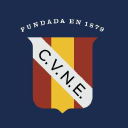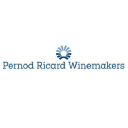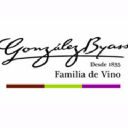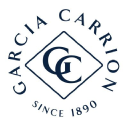Summary
Since 2020, the Spanish wine market has experienced various shifts in demand, production, and trade. The impact of COVID-19 restrictions notably affected the HORECA sector's wine consumption which is traditionally higher than that within the food sector. However, outside this impact, wine consumption in Spain remains culturally significant, characterized by consumption habits linked to age and social occasions, with older populations and affluent classes demonstrating higher per capita consumption. Geographically, Castilla la Mancha dominates wine production, accounting for approximately 51% of the country's output.
Meanwhile, wine exports have slightly decreased by 9.5% from 2018 to 2022, with Germany, the USA, and the UK being top importers. Despite this decline, Spain maintains a strong export orientation, with over half of its wine sector's products destined for international markets. Additionally, the Spanish wine market in 2022 was valued at €5.381 billion, representing substantial domestic consumption. Globally, the wine market has continued to grow, with an estimated market size of $420.45 billion in 2022, and projections suggesting a compound annual growth rate (CAGR) of 7.37% leading up to 2025. Regulations safeguarding wine quality and origin, such as DOP and PGI, remain firmly in place to ensure the standards and reputation of Spanish wines on a global scale.
Dynamics and Consumer Preferences in the Spanish Wine Market
In recent years, the Spanish wine market has demonstrated steady growth, reflecting evolving trends among consumers. The HORECA sector has traditionally led the demand, averaging around 6 to 7 million hectolitres between 2017 and 2021, overshadowing the food sector's consumption of approximately 3 to 4 million hectolitres. This pattern, however, was disrupted in 2020 due to the health restrictions to combat COVID-19, affecting the overall dynamics of wine consumption. Wine plays a diverse role in the Spanish beverage market. By volume, wine ranks fourth after bottled water, soft drinks, and beer, commanding around 5 to 6 percent of the beverage consumption. However, when we shift the focus to value, wine's contribution jumps to 20 percent, making it the third most valuable beverage segment behind soft drinks and beer. Quality and color are significant criteria to categorize wine consumption in Spain. In terms of market share by value, D.O.P. (Denominación de Origen Protegida) wines lead with over 75 percent, while I.G.P. (Indicación Geográfica Protegida) wines and non-labelled wines hold shares of 17 to 18 percent and around 5 to 6 percent, respectively. In contrast, non-labelled wines have a more substantial share by volume, at about 40 percent.
Analyzing wine consumers outside the HORECA channel, age and social status play defining roles. Older individuals (over 65 years) are inclined to higher consumption, averaging over 15 liters per capita, whereas the younger crowd (under 35 years) tends to consume less, around 3 liters per capita. Interestingly, wine consumption also correlates with social classes and marital status, showing the highest per capita consumption among the wealthiest and the least affluent social classes, and variations based on whether individuals have children. Social factors are also intertwined with wine consumption. Survey results from 2022 reveal that wine is often associated with relaxation, indulgence, socializing, and is perceived as a reward or a means to enhance well-being. Over 40 percent of Spaniards prefer wine with meals, especially dinner, and nearly half consider it a beverage for special occasions, while a significant number of Spaniards indulge in wine as part of their routine or daily habits. In the distribution landscape, traditional retail channels dominate, with physical stores making nearly 98 percent of sales. Supermarkets are the favorite shopping destination,.
Prominent Figures in the Spanish Wine Landscape
Spain, renowned for its rich viticultural heritage, is home to a tapestry of distinguished wine producers that collectively shape the Spanish wine industry. Each player, with its unique philosophy and approach to winemaking, contributes to the diversity and dynamism of the Spanish wine market.
- J.García Carrión, S.A. Grupo stands as a testament to tradition and innovation, boasting a formidable presence and an extensive product range that caters to varied palates and preferences. As a beacon of Spanish winemaking, this group continues to leave its mark both domestically and internationally.
- Grupo Freixenet, synonymous with sparkling celebration, has carved out a niche with its revered Cava, embodying the effervescence of Catalonia's Penedès region. Their commitment to quality has earned them a spot among the leaders in the sparkling wine segment.
- Familia Torres, a name etched in history, excels in combining sustainable practices with age-old winemaking techniques. Their dedication to environmental stewardship and premium wine production demonstrates a balance between respecting the land and crafting exceptional wines.
- González Byass Group (Vinos) takes pride in its Andalusian roots, especially through its flagship Sherry wines. A family-run bodega with a global footprint, they have been ambassadors of Spanish wine culture through their meticulous and celebrated productions.
- Grupo Raventós Codorníu, steeped in history, is another venerable player known for their sparkling wines, especially the iconic Cava. Their wines reflect the terroir's nuances and the family's expertise in viticulture and enology.
- Pernod Ricard Winemakers Spain S.A. operates under a global umbrella but retains a focus on Spanish wine identity. Their portfolio showcases the richness of Spain's wine regions, delivering products that resonate both at home and on the world stage.
- Compañía Vinícola del Norte de España, S.A. underscores the significance of the Rioja region, crafting wines that resonate with the area's signature style. Their wines reflect a confluence of modernity and tradition, appealing to connoisseurs and novices alike.
- Grupo Barón de Ley, S.A. embellishes the market with its offerings from the esteemed Rioja Baja zone. They emphasize integrity and quality, ensuring that every bottle captures the essence of their terroir.
to understand this market
Detailed content
 Inforamtion
Inforamtion
- Number of pages : 30 pages
- Format : Digital and PDF versions
- Last update : 05/05/2023
 Summary and extracts
Summary and extracts
1 Market overview
1.1 Definition and presentation
Wine is an alcoholic beverage obtained from the fermentation of grapes, with an alcohol content not exceeding 8.5% by volume. There are several types of wine, traditionally distinguished by color, texture and grape variety.
Worldwide, the wine market is growing and now exceeds $40 billion. The market is being driven both by greater worldwide consumption, due to market development in emerging countries, and byin developed countries, where wine is increasingly consumed on special occasions rather than as an everyday beverage.
In Spain, wine plays a key role in local culture. It is widely consumed, and its dynamism is strong on both the local and export markets. Spain is the second-largest wine exporter, behind Italy, and exports nearly 60% of its production abroad.
1.2 The World Market
Between **** and ****, the size of the global wine market grew steadily, from ***.** billion in **** to ***.** billion in **** . The compound annual growth rate(***) over this period is *. **%. In terms of evolution, we note that the market's most significant growth took place between **** and ****, with a *.**% increase in its value; growth slowed, moreover, ...
1.3 The domestic market
In ****, the Spanish wine market could be estimated at *,*** billion euros. Spanish wine exports accounted for *,***.* billion euros of this sales figure in the same year.
Spanish wine market sales Spain, ****, billions of euros Source: ****
Spanish wine production, for its part, has seen varying trends in recent years. For example, while ...
1.4 Imports and exports
Over the past five years, Spanish wine imports and exports have fluctuated. Between **** and ****, exports fell from *,*** million euros to *,*** million euros, a decrease of *.*%. Imports also varied, rising from *** million euros in **** to *** million euros in ****, recording an increase of **.*%. The trade balance, meanwhile, necessarily experienced an overall decrease over ...
2 Demand analysis
2.1 Typology of demand
Between **** and ****, the HORECA (***) and Food sectors saw varying trends in wine consumption. HORECA consumption averaged around *.** million hectolitres between **** and ****, while food consumption stood at *.** million hectolitres. Wine consumption is therefore favored in the hotel and catering sector. There was an anomaly in ****, due in particular to the health restrictions ...
2.2 Wine consumption by quality and color criteria
Within the wine market, wine will account for **.*% of sales by value in ****. Wine derivatives are estimated to account for **.*% of the market.
Wine and wine derivatives by value Spain, ****, % sales Source: ****
Within the wine market, D.O.P. wines account for **.*% of market share by value. I.G.P. wines ...
2.3 Wine consumers outside HORECA
Wine consumers outside the HORECA channel are characterized by their age. The older the population, the more likely they are to drink wine. The over-**s are the biggest wine drinkers, with an average per capita consumption of **.* liters in ****. The under-**s, on the other hand, consume less wine, with ...
2.4 Wine consumption as a social act
In ****, Spain's wine trade association carried out a survey to create a map of the main motivations for wine consumption in Spain. The aim was to answer the following question: What are we looking for when we drink beverages such as wine, beer or Vermut in good times, alone or accompanied? ...
3 Market structure
3.1 Wine value chain
3.2 Wine production
Wine production in Spain is mainly concentrated in Castilla la Mancha. With ***,*** hectares, the autonomous community accounts for **.**% of the kingdom's vineyards. The other main wine-producing regions in Spain are Catilia and León, with *.**% of land, Extremadura (***).
Wine production is therefore determined by these hectares. Castilla la Mancha accounts for ...
3.3 Distribution
As far as distribution is concerned, traditional retailing predominates: **.*% of wine sales are made through physical outlets. In ****, supermarkets were the preferred distribution channel for consumers, accounting for **.*% of sales. Traditional stores, represented in particular by wine merchants, accounted for **.*% of sales.
Wine distribution channels outside HORECA Spain, **** tqt
The average ...
4 Offer analysis
4.1 Wine typology
The table opposite shows the various criteria, such as color, origin and age, that can be used to differentiate a wine.
The map below also shows the different Spanish wine-growing regions:
Source: ****
4.2 Price trends
the INE consumer price index classification gives us an idea of the inflation experienced by alcoholic beverages and tobacco - including wine. The data show * trends in this product group. Firstly, between January **** and October ****, the former are fairly stable, with an index increase of *.*** points over these * years. From **** onwards, ...
5 Regulations
5.1 Regulations
In Spain, there are two types of label to guarantee the quality and origin of a wine. They are defined by the law"Ley **/****, de ** de julio, de la Viña y del Vino."
The Protected Geographical Indication (***) is a certification system used in Spain to guarantee that agricultural or food ...
6 Positioning the players
6.1 Player segmentation
- Reserva de la Tierra SA
- Grupo barón de ley SA
- Compañia vinícola del norte de España S.A.
- Pernord Ricard Winemakers Spain SA
- Grupo reventós Cordonius
- Grupo Gonzáles byass (vinos)
- Grupo Familia Torres
- Grupo freenet
- J.García Carrón, SA grupo.
- Freixenet
 List of charts
List of charts
- Breakdown of beverage consumption by value in Spain
- Breakdown of beverage consumption by volume in Spain
- Wine consumption by channel
- Breakdown of wine and wine-related products by value
- Breakdown in value of wine consumption by quality
All our studies are available online in PDF format
Take a look at an example of our research on another market!
Companies quoted in this study
This study contains a complete overview of the companies in the market, with the latest figures and news for each company. :
 Choosing this study means :
Choosing this study means :
Access to more than 35 hours of work
Our studies are the result of over 35 hours of research and analysis. Using our studies allows you to devote more time and added value to your projects.
Benefit from 6 years' experience and over 1,500 industry reports already produced
Our expertise enables us to produce comprehensive studies in all sectors, including niche and emerging markets.
Our know-how and methodology enable us to produce reports that offer unique value for money.
Access to several thousand articles and paid-for data
Businesscoot has access to all the paid economic press as well as exclusive databases to carry out its market research (over 30,000 articles and private sources).
To enhance our research, our analysts also use web indicators (semrush, trends, etc.) to identify market trends and company strategies. (Consult our paying sources)
Guaranteed support after your purchase
A team dedicated to after-sales service, to guarantee you a high level of satisfaction. +44 238 097 0676
A digital format designed for our users
Not only do you have access to a PDF, but also to a digital version designed for our customers. This version gives you access to sources, data in Excel format and graphics. The content of the study can therefore be easily retrieved and adapted for your specific needs.
 Our offers :
Our offers :
the wine market | Spain
- What are the figures on the size and growth of the market?
- What is driving the growth of the market and its evolution?
- What is the positioning of companies in the value chain?
- Data from several dozen databases
5 reports pack (-15%) ES Spain
- 5 reports at €75.6 excluding VAT per study to choose from our Spanish catalogue for 12 months
- Save 15% on additional studies purchased
- Choose to be refunded any unused credit at the end of the 12-month period (duration of the pack)
See the terms and conditions of the pack and the refund of unused credit.


























